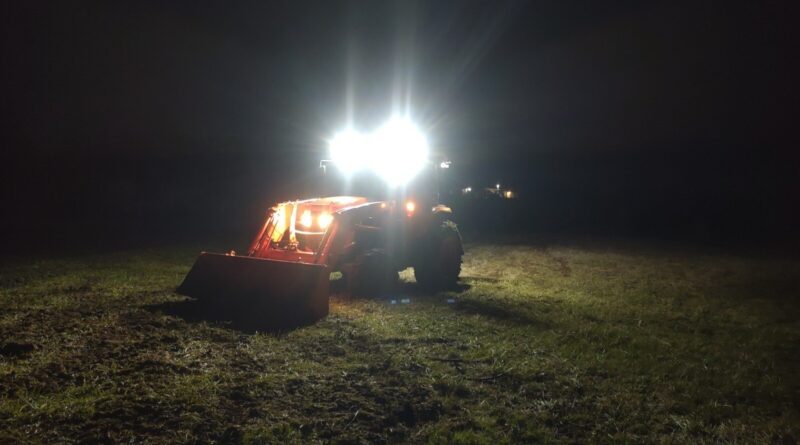LED Tractor Work Lights vs Traditional Bulbs: Which Is Better for You?
Choosing the right lighting for your tractor can significantly impact your productivity, safety, and overall working experience. Whether you’re farming, plowing snow, or performing construction tasks at night or in low-light conditions, proper illumination is essential. Two of the most common lighting options are traditional halogen/incandescent bulbs and the more advanced LED (Light Emitting Diode) tractor work lights. Understanding the differences between these options can help you make an informed decision that best suits your needs.
Modern LED Tractor Work Lights have become increasingly popular due to their superior performance and energy efficiency. Unlike traditional bulbs, LED lights offer advanced features such as dual-function spot and flood beams, which provide better visibility in various working environments. This versatility makes LED work lights a smart investment for those looking to enhance both safety and efficiency in night-time operations.
Brightness and Light Quality
One of the primary advantages of LED lights is their superior brightness and clarity. LED tractor work lights emit a white, daylight-like beam that improves visibility and reduces eye strain. This sharp, focused light makes it easier to identify obstacles, read instruments, and maintain precision while working.
Traditional halogen and incandescent bulbs, on the other hand, typically produce a yellowish light that can scatter and diminish in effectiveness over distance. This often results in reduced visibility, especially in foggy or dusty conditions. LED lights maintain consistent intensity, offering a clear advantage in challenging environments.
Energy Efficiency and Power Consumption
LED lights are significantly more energy-efficient than traditional bulbs. They convert a higher percentage of electrical energy into light rather than heat, which means less energy is wasted. This efficiency translates into lower fuel consumption for your tractor and a reduced load on its electrical system.
In contrast, halogen bulbs require more power to produce less light. This increased energy demand can place unnecessary strain on your tractor’s battery or alternator, especially if you’re operating multiple lights or attachments at once. Over time, this inefficiency can contribute to higher maintenance costs.
Lifespan and Durability
Durability is a critical factor when selecting work lights for heavy-duty equipment. LED tractor lights typically have a lifespan of 30,000 to 50,000 hours or more, making them far more durable than traditional bulbs. They’re also built to withstand harsh conditions like vibration, moisture, and dust—common challenges in agricultural and construction settings.
Halogen and incandescent bulbs are more susceptible to damage from vibration and environmental exposure. Their glass components can break easily, and their shorter lifespan means more frequent replacements, which can interrupt your work and increase long-term expenses.
Cost and Long-Term Value
While LED lights may have a higher upfront cost than traditional bulbs, they offer substantial long-term savings. Fewer replacements, lower energy consumption, and less downtime all contribute to a lower total cost of ownership. For professionals who rely on consistent lighting for extended periods, this long-term value is hard to ignore.
Traditional bulbs are cheaper initially, but their short lifespan and higher energy demands lead to increased operational and maintenance costs over time. For occasional use, they might suffice, but they fall short in continuous or demanding applications.
Safety and Performance
LED lights improve operator safety by providing better illumination of the surroundings, which helps in avoiding obstacles and minimizing accidents. Their instant-on feature ensures there’s no delay in lighting up work areas, unlike some traditional bulbs that take time to reach full brightness.
Additionally, LEDs remain cool to the touch, reducing the risk of burns or fire hazards in enclosed or flammable environments. Traditional bulbs generate a significant amount of heat, which can be problematic during long periods of operation or in high-temperature conditions.
Versatility and Compatibility
LED tractor work lights are available in various configurations, including flood, spot, and combination beams, allowing users to tailor lighting based on specific needs. Most modern LED lights are also compatible with a wide range of tractors and machinery, thanks to universal mounts and adaptable voltage settings.
In comparison, traditional bulbs often lack such versatility and may require specific fittings or adapters, which can complicate installation and limit usage across different equipment types.
Final Thoughts
When comparing LED tractor work lights and traditional bulbs, LED technology clearly comes out ahead in terms of brightness, energy efficiency, durability, and safety. Although the initial investment in LED lighting may be higher, the long-term benefits far outweigh the costs, making it the better choice for most users.
If your operations depend on consistent, reliable illumination—especially in challenging or low-light environments—upgrading to LED tractor work lights is a practical and forward-thinking decision. For those who value efficiency, safety, and performance, LED lighting offers the edge needed to keep working effectively, no matter the time of day.




